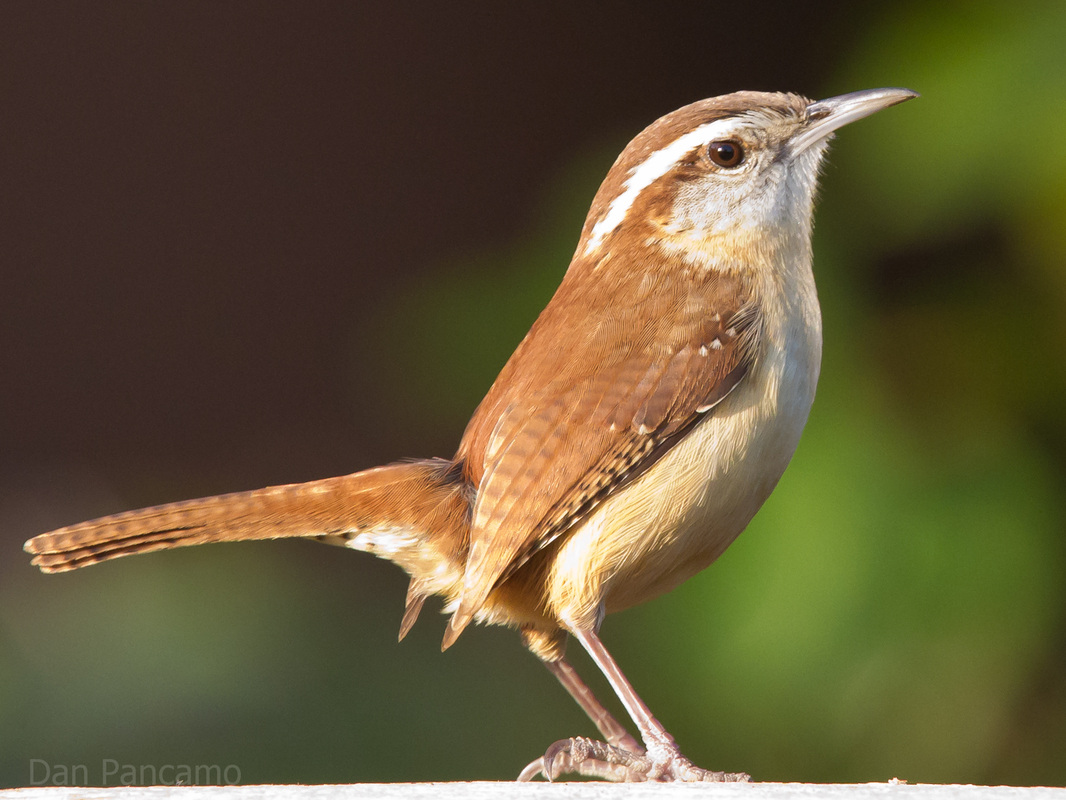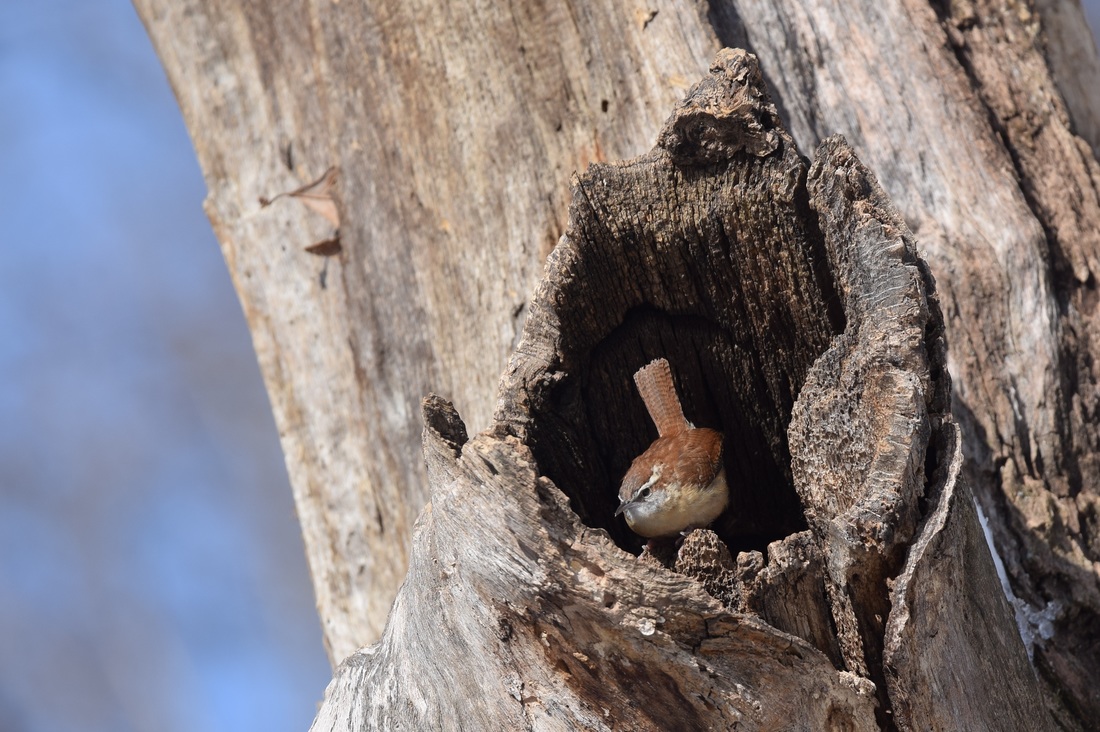carolina wrenThryothorus ludovicianus
Identification:
This small reddish brown bird has a prominent white eye stripe, a short tail (often cocked upward) delicately barred with chestnut brown and white, a long-ish curved bill, and buffy coloring on the breast. Behavior: The Carolina Wren is a busy creature, seldom still for long. Its flight is low and fluttery, and it hops about in shrubs, brush piles, trees, and even under the eaves of buildings looking for insects. It will eat seeds or suet from a feeder. Its song is remarkably loud for such a small bird; ornithologists describe it as “teakettle, teakettle.” Pairs stay together for life. Though they will eat seeds and suet, mainly their diet consists of caterpillars, weevils, beetles, ants, bees, wasps, and spiders. They are cavity nesters. What brings it to the SBG? Food, cover, nesting sites. The native plantings at SBG attract many organisms to satisfy the Carolina Wren’s insect heavy diet. The best habitat for the Carolina Wren is brushy growth with some wooded portions and some open portions, so SBG fits the bill. The Carolina Wren is an adaptable nester; it will use natural cavities like woodpecker holes, but also human discards like containers and even (reportedly) an old coat pocket. It is also wide ranging in its use of nesting material. SBG likely affords both materials and sites for nesting Carolina Wrens. When can I see it? Year-round. The Carolina Wren’s winter range has been edging northward as temperatures edge upward. |


